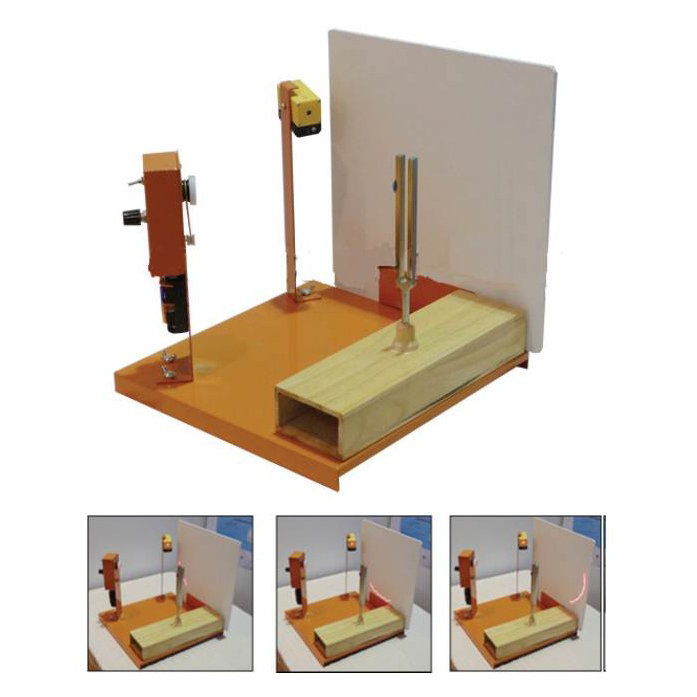
The molecules of air are only temporarily disturbed from their rest position they always return to their original position. There is no net displacement of the air molecules. Air molecules are continuously vibrating back and forth about their original position. A careful inspection of the particles of the air (represented by dots) reveal that the air molecules are nudged rightward and then move back leftward to their original position. There is another important characteristic of waves depicted in the animation above. This is what makes a sound wave a longitudinal wave. The air molecules are vibrating about a fixed position from left to right and from right to left. In the animation above, the energy is shown traveling outward from the tuning fork - from left to right. In a longitudinal wave, particles of the medium vibrate back and forth in a direction which is parallel (and anti-parallel) to the direction of energy transport. The animation above depicts a sound wave as a longitudinal wave. But in mediums which are fluid (e.g., gases and liquids), sound waves can only be longitudinal. In solids, sound can exist as either a longitudinal or a transverse wave.


These regions are transported through the surrounding air, carrying the sound signal from one location to another. As the tines continue to vibrate, an alternating pattern of high and low pressure regions are created. The high pressure regions are known as compressions and the low pressure regions are known as rarefactions. As the tine then moves inward from its usual position, air surrounding the tine expands this produces a low pressure region next to the tine. As a tine stretches outward from its usual position, it compresses surrounding air molecules into a small region of space this creates a high pressure region next to the tine. The back and forth vibration of the tines produce disturbances of surrounding air molecules.

When the tuning fork is hit with a rubber hammer, the tines begin to vibrate. The fork consists of a handle and two tines. Whether it be the sound of a person's voice, the sound of a piano, the sound of a trombone or the sound of a physics book slamming to the floor, the source of the sound is always a vibrating object.Ī tuning fork serves as a useful illustration of how a vibrating object can produce sound. Sound waves are produced by vibrating objects. Multimedia Studios » Waves, Sound and Light » Tuning Forks and Longitudinal Waves


 0 kommentar(er)
0 kommentar(er)
